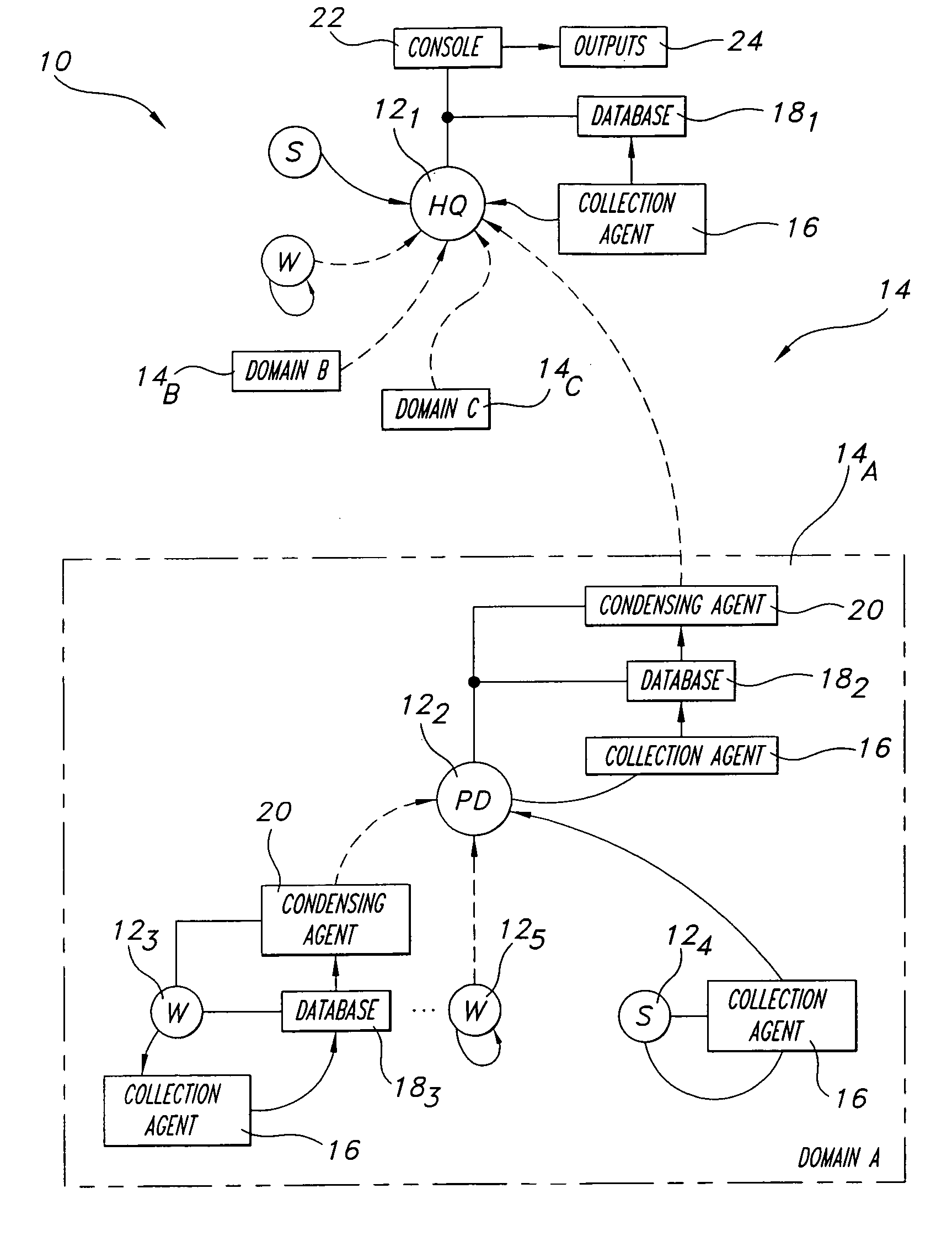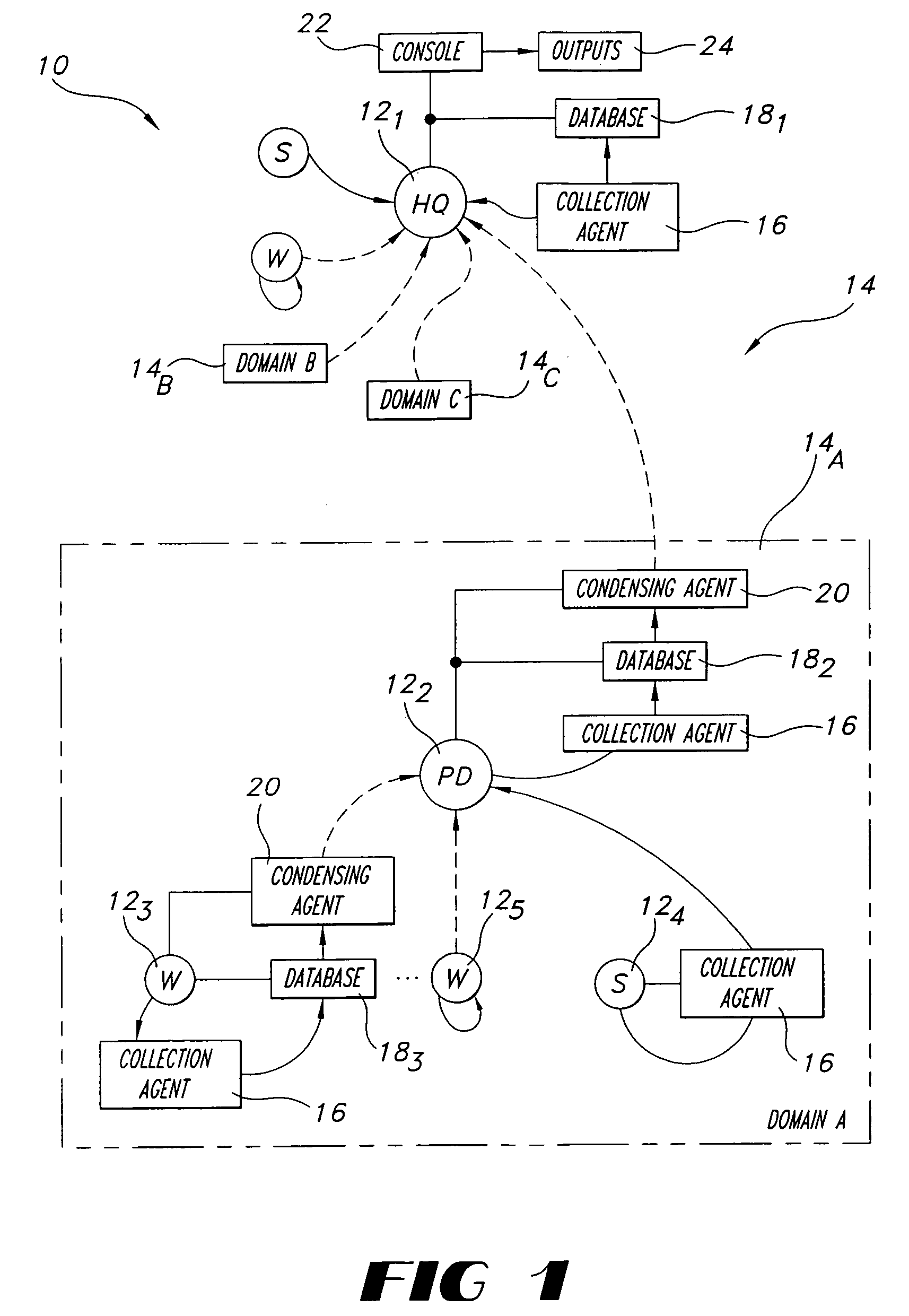System and method for managing information for a plurality of computer systems in a distributed network
a distributed computing and computer system technology, applied in computing, instruments, electric digital data processing, etc., can solve the problems of unreasonably long database query time, unreasonably large resource consumption, and inability to meet the needs of users, and achieve the effect of small network bandwidth
- Summary
- Abstract
- Description
- Claims
- Application Information
AI Technical Summary
Benefits of technology
Problems solved by technology
Method used
Image
Examples
Embodiment Construction
[0029]Referring now to the drawings wherein like reference numerals are used to identify identical components in the various views, FIG. 1 shows an apparatus 10 for managing a plurality of computers which are designated 121, 122, . . . 12n, deployed in a distributed network 14. Distributed network 14 may include one or more domains, such as Domain A, designated 14A, Domain B, designated 14B, and Domain C, designated 14C. Computers 121, 122, . . . 12n may comprise conventional server computers and workstation computers. As illustrated in FIG. 1, computers 121, 122, . . . 12n may be arranged in an hierarchical relationship, wherein computer 121 may be a top-level master node (e.g., at a headquarters location), computer 122 may be a primary database (PD) for Domain A (a parent node from which one or more branches extend), and computers 123, 124, and 125 may be a workstation computer (“W”), a server computer (“S”), and another workstation computer, respectively. Although a tree-style hi...
PUM
 Login to View More
Login to View More Abstract
Description
Claims
Application Information
 Login to View More
Login to View More - R&D
- Intellectual Property
- Life Sciences
- Materials
- Tech Scout
- Unparalleled Data Quality
- Higher Quality Content
- 60% Fewer Hallucinations
Browse by: Latest US Patents, China's latest patents, Technical Efficacy Thesaurus, Application Domain, Technology Topic, Popular Technical Reports.
© 2025 PatSnap. All rights reserved.Legal|Privacy policy|Modern Slavery Act Transparency Statement|Sitemap|About US| Contact US: help@patsnap.com



